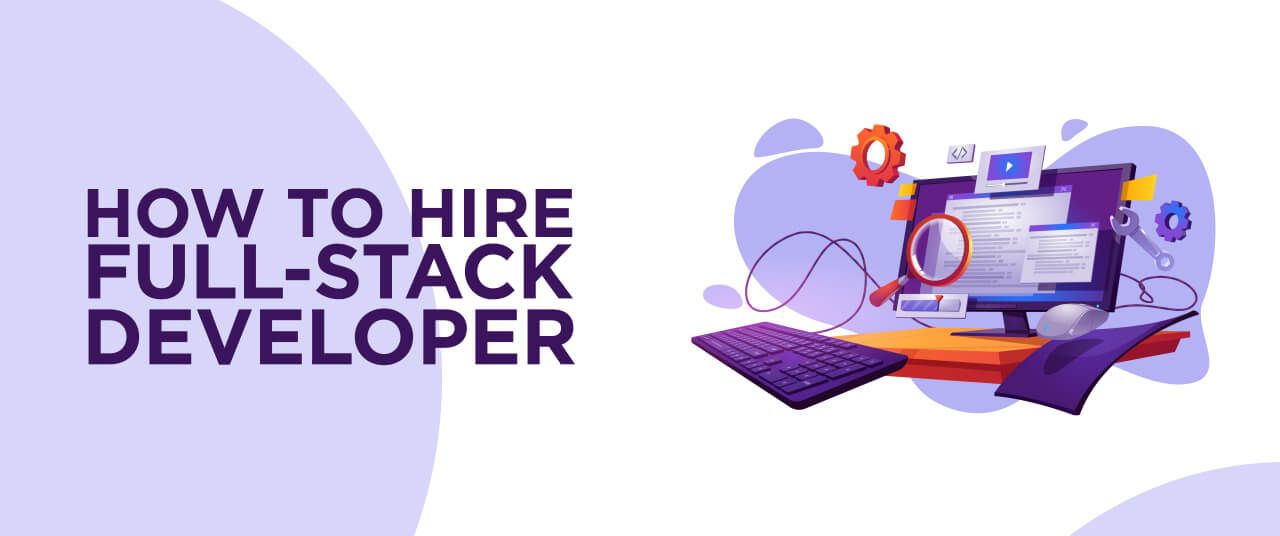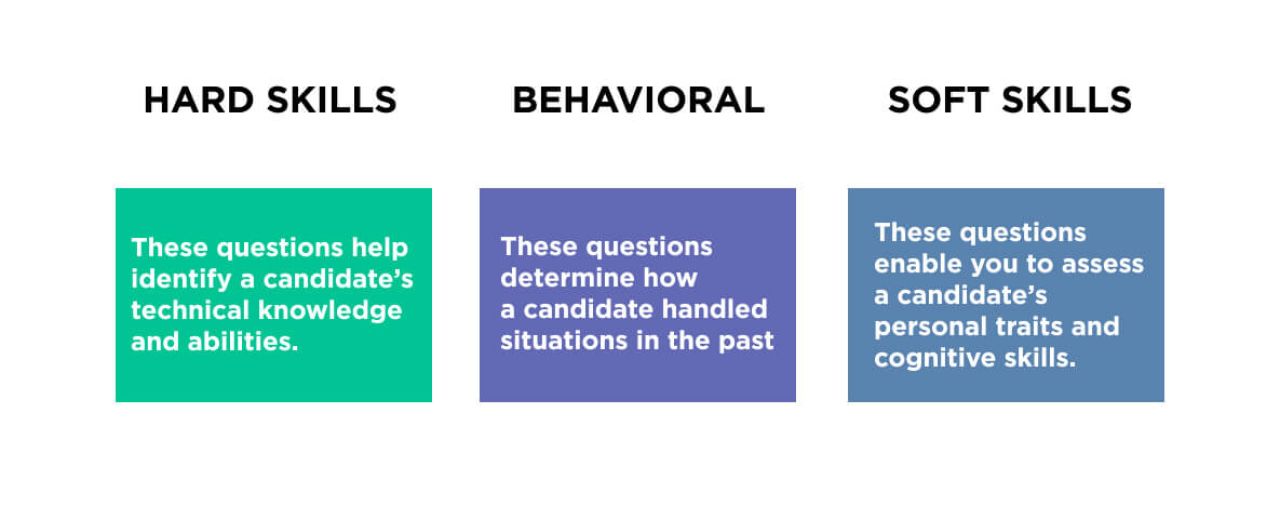How to Hire Full-Stack Developer Fast when You Need to Scale Quickly?

Coming up with the next billion-dollar idea is only half the challenge. Your next step is to find a great development team that can bring your idea into reality. So, we recommend you consider some options, including a popular one—hire full-stack developers. But when it comes to hiring full-stack developers, you may need help. The main issue is how and where to find them.
This article will provide you with comprehensive information to help you make your conscious decision about hiring a full-stack developer or even a dedicated team. You’ll find out what exactly to look for in a full-stack developer, where to find the best of them, and what to ask them in an interview.
Things to Consider Before Hiring a Full-Stack Developer
Why Is It Better to Hire a Full-Stack Developer than a Specialized One?
Before we dig deeper, let’s consider why it is better to hire a full-stack developer than a specialized developer.
- Delegate all technical issues. If you have little or no knowledge of the software, you can delegate the technical part of the project to a developer and focus on what you do best. This way, you can be sure that the technical side of things will get done.
- Make the team flexible. When creating a software development team, you want your employees to be flexible enough to adapt to changing requirements. Therefore, your team members should be qualified to work on both the front and back end.
- Cost-effectiveness. Rates for full-stack developers are usually quite high. But if you compare the cost of front-end and back-end developer services separately to full-stack developer services, you’ll see that you cut expenses.
- Reduced development time. Full-stack developers can seamlessly switch between tasks and from the client side to the server side. They are also more self-reliant compared to specialized developers. Thus, the overall development time can be reduced.
- Quick identification of issues. Full-stack developers can quickly identify and fix development issues, as they are familiar with all the stages of the process.
Which Hiring Model Works Best for You?
Before hiring full-stack software developers, you should decide which hiring model works best for you. There are three models of outsourcing cooperation:
In-house
Hiring full-stack developers for your in-house team is the most expensive option. On average, an employee actually costs 125% to 140% of their salary. You’re responsible for all the expenses and processes, from resources for finding candidates to organizing the workspace for new employees. In addition to the fact that hiring a full-stack developer is expensive, it’s a longer commitment than outsourcing the work. When the project is completed, the person expects the same amount of work and pay. If you need additional powers for one or two projects, it may be more affordable to outsource some tasks.
But along with the drawbacks, hiring full-stack employees has its benefits, such as straightforward communication, improved security, face-to-face brainstorming, etc.
Staff Augmentation
Whether you hire a front-end, back-end, or full-stack developer, outsourcing to a software development company allows you to streamline and control the development process. It allows you to scale your team quickly and eliminate administrative and legal hassles.
Companies have the expertise of creating dozens of projects. Work will be done quickly because a whole team of developers will be dispatched to work on your project. They provide official contracts, timesheets, and consulting.
But what should you pay attention to before choosing an app maker? First, you should look at the company’s portfolio, case studies, and products. It is a bonus if they have developed software related to your idea.
Freelancers
Hiring freelancers has advantages like flexibility and lower hourly rates in comparison to the rates of in-house engineers. But there is also a wide range of drawbacks to consider, such as poor data confidentiality, less control over the working process, language barriers, and different time zones.
If a software development company doesn’t meet your requirements, you can hire freelance developers. But before you hire a freelance full-stack developer, it’s important to understand what you’re getting into and how to navigate the process without any difficulty or doubt.
| In-house | Staff augmentation | Freelancers | |
| Pros |
|
|
|
| Cons |
|
|
|
How to Hire a Full-Stack Developer
Nowadays, there are plenty of full-stack developers for hire, but the best method to hire an engineer depends on your requirements and preferences. Before you begin your search, here are the main principles to keep in mind.
Where to Find Full-Stack Developers
There are many ways to find and hire full-stack developers. Here are the most reasonable sources for finding app developers:
- Job portals. Start your research on well-known portals like Monster, Dice, and Glassdoor.
- Freelance websites. Also, you can search for an app developer through freelance sites like LinkedIn, Indeed, Upwork, People Per Hour, AngelList, Guru, and Behance. Note, however, that while freelancers may have the necessary skills, they don’t have an established business. Freelancers are self-employed, but some of them have full-time jobs, and their job workload can influence your project quality.
- Forums. For full-stack developers, check out forums such as GDGs or Reddit.
- Repositories. Open-source repositories like GitLab and GitHub enable you to estimate developers’ skills and view code samples.
- Directories. Look through online directories and communities for developers, such as Topcoder or Polycom.
- B2B directories. B2B platforms like GoodFirms, Softwareworld, Itfirms, Toptal, Meetup, and Clutch list full-stack development outsourcing companies, grouped by location, rating, and expertise.
- Tech blogs. Glance through development companies’ blog posts to determine whether their expertise fits your project idea.
- Social media. LinkedIn, Facebook, and Twitter enable direct communication with experienced candidates.
How to Hire Remote Full-Stack Developers
Hiring full-stack engineers can be divided into three main categories according to the contractor’s geographical location:
- Onshore refers to hiring developers located in the same country or even in the same city as you. Since the development team is close to you, you can schedule meetings, interviews, and discussions whenever it’s convenient for you. They can work in your office or freelance. But keep in mind that the cost of hiring onshore or in-house specialists is high, and the number of developers is limited.
- Nearshore is similar to offshore outsourcing, but the service providers are located in nearby countries. Nearshore talent offers both talent and cost-effectiveness. But developers in nearby countries may not be as cheap as those in more distant countries. If there are no affordable developers in your region, you are better off hiring an offshore software development company.
- Offshore outsourcing implies hiring third-party providers, often situated in other countries in the world. The main benefit of hiring offshore talent is affordable cost. Also, you have a bigger talent pool of skilled developers. But you would have to overcome issues like the language barrier, different time zone problems, and virtual meeting sessions.
Top Interview Questions for Full-Stack Developers
Hiring full-stack developers is tricky, especially if you know very little about full-stack development. Below, you’ll find some questions to ask candidates before hiring. We’ve divided them into categories based on their area of interest.

Questions to Evaluate Hard Skills
- How would you store a user’s password on an online portal—and why?
- If you had a month to develop a project from scratch, which frameworks, technologies, and programming languages would you use?
- What is RESTful programming?
- What are SQL joins? Name the main types of SQL joins.
- List the methods to scale a database.
- What is a thread, and what is a process? Multiple threading or select?
- How would you store a user’s password on an online portal—and why?
Questions to Evaluate Behavioral Skills
- What is your favorite programming language and why?
- Given the choice to specialize in front-end or back-end development, why did you choose to learn the full spectrum?
- What would you do if you found inefficiencies in someone else’s code?
Questions to Evaluate Soft Skills
- What role do you have in the team, and how do you contribute to effective work?
- Have you had any experience in leading people? What did you like and dislike about it?
- How do you keep up with the latest coding developments and programs?
- Discuss a time you struggled with debugging or another implementation issue.
How Much Does It Cost to Hire a Full-Stack Developer?
The cost of hiring a full-stack developer depends on factors like a developer’s experience; their location; the project’s size and complexity; and whether you want to hire one developer or a team of developers.
Normally, developers from the US, UK, Canada, or Australia are more expensive. For example, Indeed’s analysis of full-stack developer salaries in the US illustrates that the average salary for a full-stack developer stands at $106,167 per year, with a $4,750 annual cash bonus. A more experienced full-stack developer who has mastered more technologies can earn up to $140,000 a year.
For instance, in Mexico, the average salary ranges from $28,800 to $64,000 a year. In other popular hiring destinations, such as Georgia or Poland, a full-stack developer is paid an average of $65,000 and $91,000, respectively.
Experience also matters. A full-stack engineer with 10 years of experience in Georgia or Lithuania can earn as much as a full-stack engineer with two years of experience in Canada or the US.
But note that although salary makes about 80%, there are additional cost factors: taxes, benefits, technical equipment for work, office space, etc. These could increase the cost of hiring a full-stack developer to twice as much as their salary.
Mistakes to Avoid when Hiring Full-Stack Developers
Hiring full-stack developers is no easy task. There are so many things to consider: your company’s requirements, the stack you want, etc. Defining these fundamentals will lead you to the appropriate candidate.
But there are still some costly mistakes you can make in hiring a full-stack developer:
- High expectations. When hiring full-stack developers, keep in mind that they are jacks-of-all-trades. That means they are not 100% proficient in any one area but are capable of performing multiple functions. If you want to hire a MEAN-stack-savvy developer, consider hiring a specialized developer instead of a full-stack developer.
- Ignoring technical tests. When a manager likes a candidate’s attitude toward the company and her/his management and people skills, that manager may hire a full-stack developer without thoroughly checking her/his technical background. Such a candidate will have trouble delivering and will fail to get the job done. That’s why checking test projects involving architecture and front-end is so crucial. You can also ask the developer for code examples on GitHub/GitLab.
- Limiting the range of search. It’s better to be open to hiring channels such as social media or freelance portals. Don’t limit yourself to nearshore employees.
- Lack of face-to-face meetings. Face-to-face or on-camera meetings help establish a deeper connection between the remote developer and the company. They also increase the sense of responsibility and improve the candidate’s attitude toward the job.
Whether you’re looking for a candidate who meets your requirements or for a specific skillset or expertise, we at VironIT are ready to help you. Contact us to discuss your idea and get a free quote.

 (4 votes, average: 4.00 out of 5)
(4 votes, average: 4.00 out of 5)


